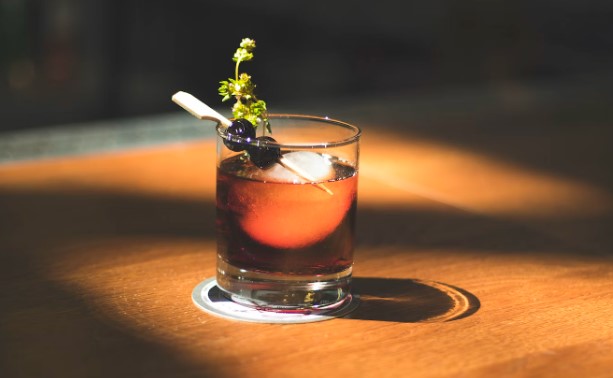
In the last few decades, there’s been a cocktail renaissance in the US. Perhaps you missed it. If you didn’t, you’ve likely seen the return of classic cocktails, the rise of mixology, and the emphasis on exciting, flavor-enhancing techniques. One of our favorites of the latter is fat-washing whiskey.
For those new to the concept, fat washing isn’t the act of “washing” your whiskey with fat in the sink or some other washing receptacle. It’s a cocktailing technique in which a fat (like butter, bacon fat, coconut oil, or some other fat) or an oil is used to infuse an alcohol. In this example, it’s whiskey.
- First, room-temperature whiskey is poured into a dish or sealable container (definitely not a bottle).
- Add your fat of choice to the container. Leave it on the counter for a few hours so the fat can separate from the whiskey.
- Then, put the container into the refrigerator or freezer and leave it there until the fat forms a sort of crust on top.
- Remove the container and then either scrape off the fat or strain it through a cheesecloth.
What’s left is a fatty, buttery whiskey that’s perfectly suited for sipping neat, on the rocks, or as the base for your favorite whiskey-based cocktails.
Fat-washing done deliciously
While the technique of fat-washing itself is important and each individual step is necessary, the most important thing is the fat you decide to use. While bacon fat, coconut oil, avocado oil, and peanut butter are extremely popular, another great option is brown butter.
Don’t know what brown butter is? Well, in the simplest terms, it’s unsalted butter that’s melted in a pan and then sauteed on a low heat level to separate the milk solids and the butterfat. The solids sink to the bottom of the fan and slowly cook, turning a brown color. The whole buttery mixture ends up having a toasty, nutty flavor. It’s a popular ingredient in French cuisine and various pastries. Its use in fat-washing will also give your whiskey an elegant, nuanced hazelnut, toasty, sweet vanilla, and buttery caramel flavor.
So, next time you think of fat-washing your favorite whiskey, instead of opting to save that bacon grease or extra coconut oil, opt for brown butter instead. It’s fairly easy to make and is sure to add a new dimension to your favorite whiskey. Sip it neat, on the rocks, or mixed into a classic old fashioned, Manhattan, Vieux Carre, or Sazerac. It’s guaranteed to add a new, slightly savory, nutty, toasty flavor and aroma to your favorite cocktail.
Plus, learning how to make brown butter is a guaranteed way to make your baked goods taste better. Chocolate chip cookies or pastries made with brown butter are elevated to a new level. Impress your friends and family with a buttery, nutty cocktail paired with an indulgent, chewy, chocolatey, nutty cookie, and everyone is going to want to stop by your house this holiday season (and every other season for that matter). What could be better than that? Whiskey, cookies, and good times.
Editors' Recommendations
- Great wine doesn’t have to be super expensive — Pros’ best tips for finding a good, affordable bottle
- You can now pre-order Woodford Reserve’s 2024 Kentucky Derby bourbon and it’s only $55
- 5 fan-favorite budget rum bottles, ranked
- You should know how to make these incredible sauces
- Cruciferous vegetables are the secret to a healthy diet — here are 9 you should be eating




